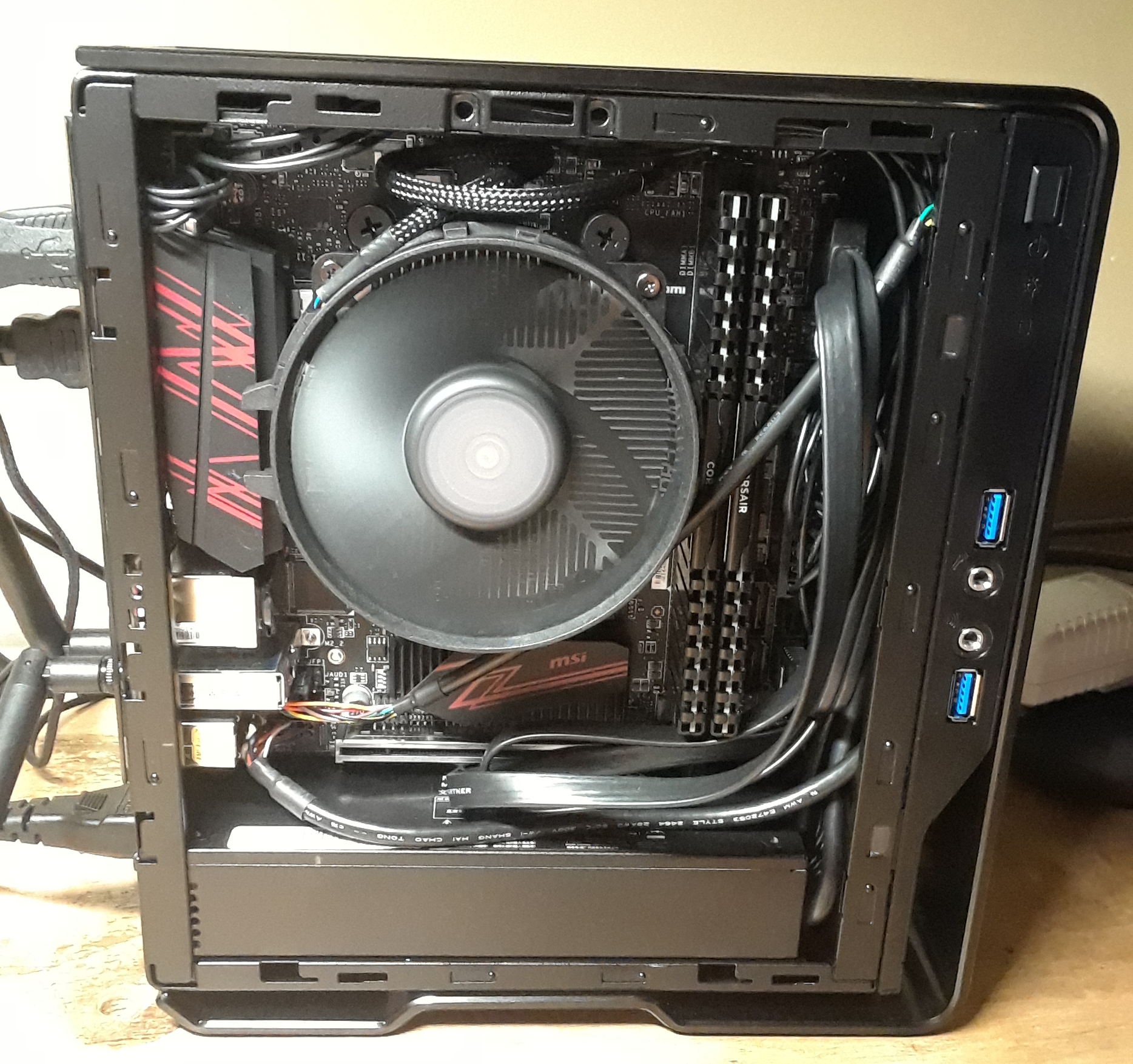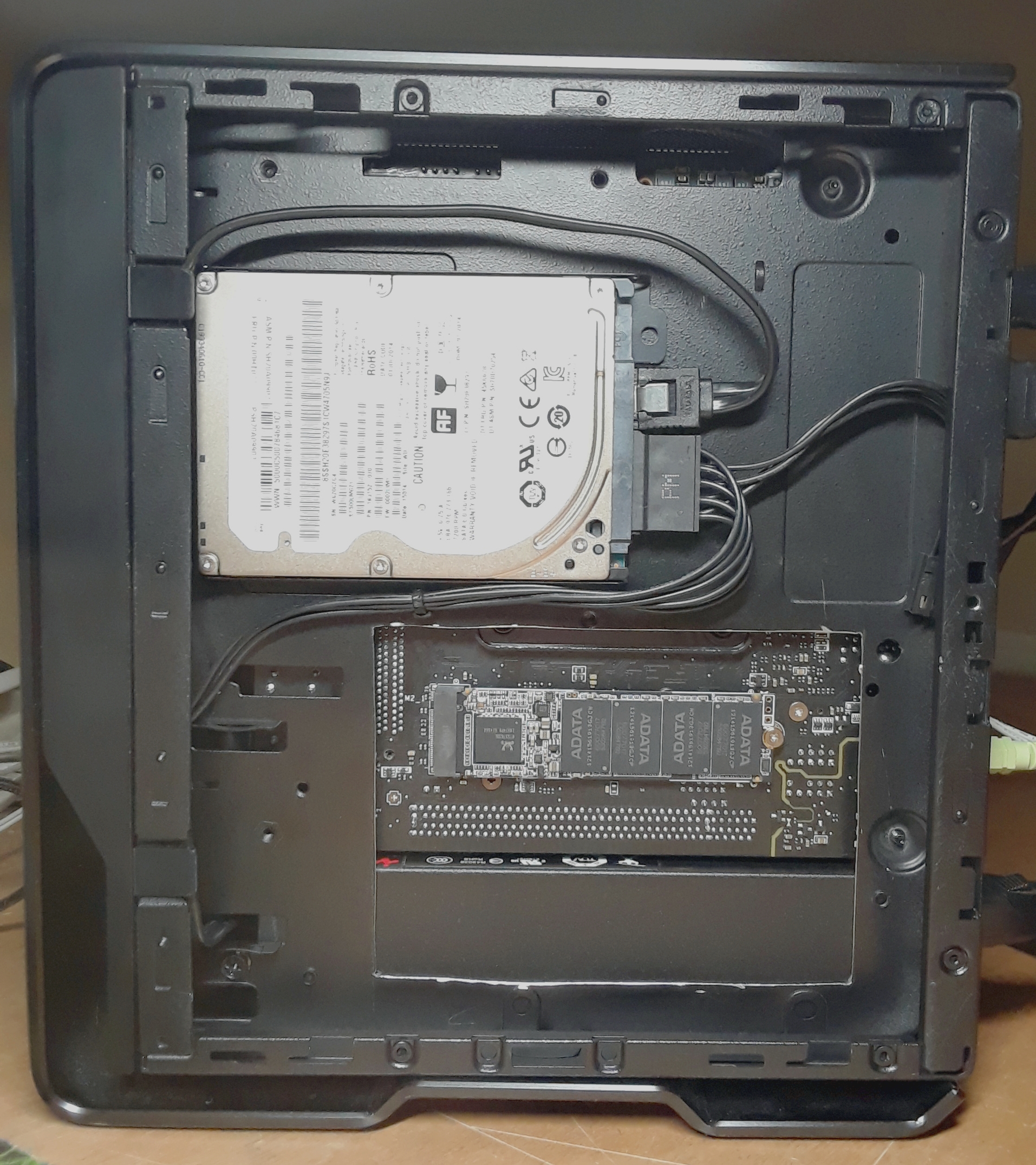The Great Computer Shrinking Saga Begins!
Long ago, a year before the great COVID pandemic, I constructed my first desktop PC. Unknowingly I had set myself on a futile quest for PC perfection. It would cost me hundreds of hours and thousands of dollars, and never truly be complete.
It all began when my younger brother got me interested in some new components that had come on the market: APU's. A fancy name for a CPU with integrated graphics, specifically, integrated graphics powerful enough to play the occasional game or other demanding graphical application. As I was a student of computer engineering, working on a masters degree, I found this new class of CPU to be quite interesting. I wanted one! For you other nerds, I speak of the AMD Ryzen 5 2400G, four-cores, eight-threads, with eleven 'vega' GPU execution units, all built on a 14nm process node.
Not that impressive now, but it was the best integrated graphics money could buy at the time! So, I found out about this cool new chip, at the same time my brother was upgrading his desktop a bit. Now, its not like either of us really knew much about computers. My brother was using an antiquated FM2+ chip on a ITX motherboard that had a broken DDR3 slot. Means he was running a old dual core, with a single channel of DDR3 1600MHz memory... It was BAD. His upgrade was moving to a new (cheap) mid tower case, and changing from a Nvidia 630 to an AMD RX-570. We're talking a sub $450 computer.
Alongside, my upgrade was from a 2014 Thinkpad to a small 2400G build. It can be seen in the image below, after a modification or two. There were some issues with the M.2 on the back of the motherboard overheating, so I cut a hole to let it breathe. Later a copper heatsink was also rubber-banded to the M.2. In all it cost about $500, so a fairly low budget desktop. Sorry for the low quality pics, they are the best I have from back then:


Specs:
- InWin Chopin ITC case
- AMD Ryzen 5 2400G
- MSI B450i ITX motherboard
- Cheapest 3600MHz DDR4 8GB x2 I could find
- XPG M.2 256GB (back of motherboard)
- Generic 500GB HDD from an old laptop
Originally I was running a dual boot Linux/Windows, and using it as my main PC. Now I use it as my "server" running headless linux, hosting VMs and network attached storage. But I am getting ahead of myself. When first built, it was only using the M.2, a crappy HDD, and the stock "wraith stealth" cooler. As a desktop, it worked very well after fiddling with the iGPU and CPU frequencies. I wanted to play The Witcher 3, a big open world RPG. Using integrated graphics. Stock performance wasn't cutting it, because AMD's auto boost led to the CPU sucking up most of the package power, and limiting the iGPU frequency. Basically, with my cooling solution, I could only put about 75 Watts into the chip, and still keep it under 95C (the temp at which the chip auto turns off).
- So on a side note, I am perfectly comfortable running a CPU at 90 degrees Celsius. Modern CPUs are designed to protect themselves if you go over the package thermal limit. Yes, running a chip a very high temps may decrease it's lifespan some. However I am not running chips at 90C 24/7... usually only for a few hours a week when playing a game or something. If the chip fails in 4 years instead of 6 years, I don't care, because I plan on upgrading the chip after 2-3 years anyway.
Now, with stock settings, the APU is great. Minecraft in 1080p 60FPS? Easy. Kerbal Space Program? No sweat. Witcher 3 in 1080p, high settings? Only about 20 FPS... So, I tried to maximize game FPS by better splitting power between the iGPU and CPU. First I underclocked (and undervolted) the CPU to ~3.4GHz and disabled all the precision boot overdrive nonsense. Overclocked the iGPU to 1.4GHz, and gave it as much RAM as BIOS would let me. Resulted in about 35 FPS in the Witcher 3! Awesome!
All was well, until I needed to write some code with GPU accelerated parallel processing...
Part 2!